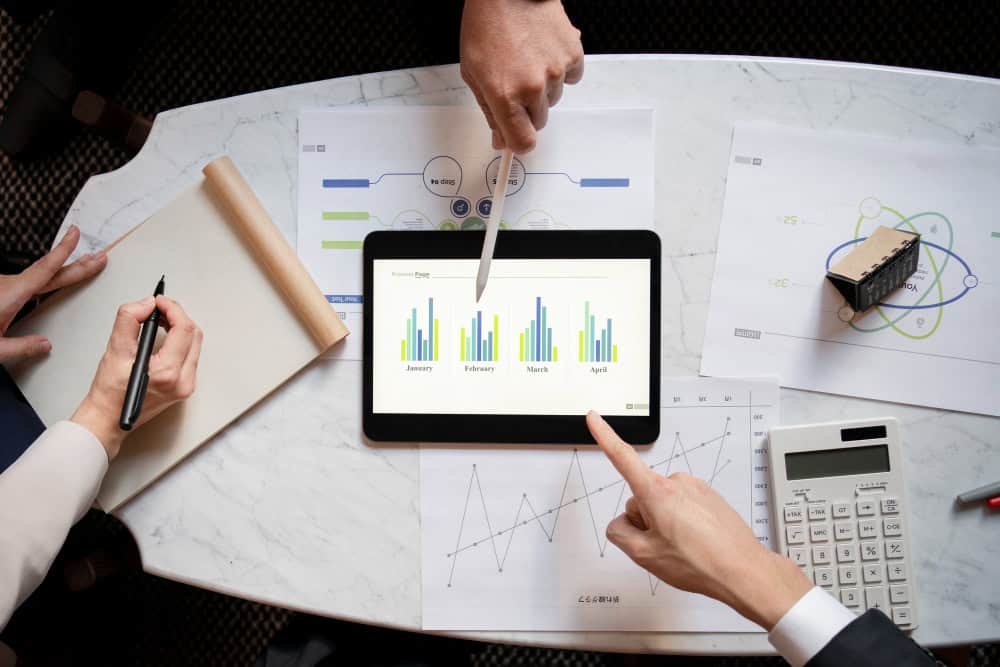What is a KPI in Digital Marketing?
When plans are not generating the desired profit, you will need to re-strategize your campaigns/marketing programs/investments. KPIs help in determining what needs to be changed and optimized for a total digital win. It gives a widespread insight into product performance, customer preferences, and market trends at large. To put it in simple words, by leveraging KPI metrics you can amplify your profit margin and dare to take calculative risks for a better future.5 Trending Digital Marketing KPIs to Maximize Profit
Social media is like a sky to fly high; you only need to determine the route. So let us talk to you about the most useful KPIs that can make you understand if you’re on the right path or need to take turns. Before we start, keep in mind that KPIs can be general and channel-based. So, you can track marketing metrics according to your achievement goals.1. Customer Lead
Customer lead is one of the most significant KPI metrics in digital marketing. It helps you understand the effectiveness of any campaign or the whole website. Customer leads are further categorized into two segments— a). Marketing Qualified Lead (MQL): If someone engages with any of your marketing campaigns like Facebook Ads or Instagram Poll reels, those engagements are considered MQLs. b). Sales Qualified Lead (SQL): For prospects who went beyond just viewing your sales content, meaning vetted to indulge with your offering is SQL. For instance, you are offering certain certified upskilling courses and a lead connected with your team for further process of availing the study material.2. Conversion Rate
Cost per click or conversion rate indicates the percentage of visitors in action on your website. It can be making a purchase, filling out forms, or subscribing to any product. By tracking the conversion rate you can determine how much traffic is turning into leads and which areas of marketing need optimization for customer retention. This KPI metric can also help to allocate your marketing budget more wisely; as and where needed. A higher conversion rate signifies better engagement and alignment between marketing strategies and audience interests. Hence, monitoring and optimizing conversion rates help businesses enhance their online presence, boost sales, and achieve marketing objectives efficiently. You can find out your conversion rate by dividing the number of conversions by the total number of clicks on CTA and then multiplying the sum by 100.3. Keyword Ranking
This is an SEO KPI. As keywords help to get good rankings on SERPs, monitoring your keyword rankings can help you understand your website’s position. Remember pages can rank on multiple keywords, so track and utilize keywords that are organic and relatable to your service/product. This can also bring good traffic to your website.4. Click-Through Rate
CTR can be used on specific channels of lead generation, such as emails, messages, social media posts, or in general for the whole website. CTR provides insights into how many people engage with your content. Click-through rate varies from industry to industry. So if you need to increase the rate work on your content quality (visuals/graphics/copies).5. Return on Advertisement Spend
Return on advertisement spend also known as ROAS, is the revenue you acquire from the investment in ad campaigns across different digital channels. This common digital marketing metric gets you a clear picture of whether your investments in advertising in every funnel are being fruitful. You can craft compelling content, make changes to your product or services, and optimize older ads by utilizing a bundle of other KPIs to earn maximum ROAS. Remember, the basic game of business is the same as traditional time. You cannot succeed without effective communication aka. marketing. As said earlier digital marketing is a vast terrain filled with exciting curves, track and evaluate the maximum number of KPIs to achieve a continuous profitable traction in business. Apart from the abovementioned KPIs, a few other significant metrics to follow are—- Customer Lifetime Value.
- Follower Growth (Social Media KPI).
- Referral Trafic.
- Average time spent on websites.
- Open Rate
- Cost per Acquisition




